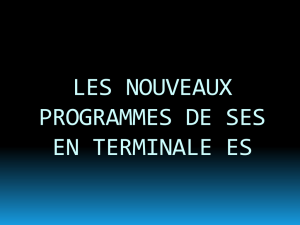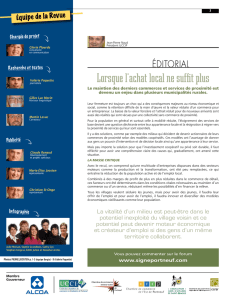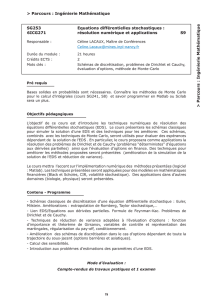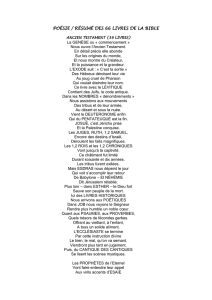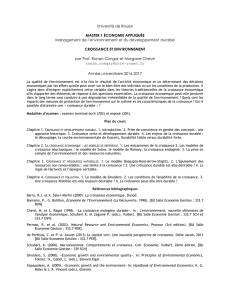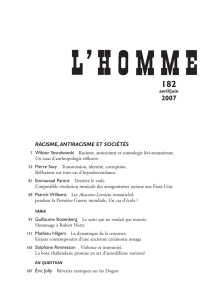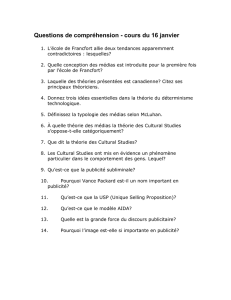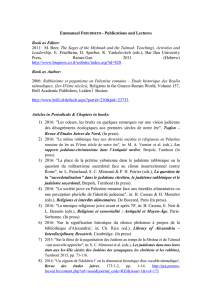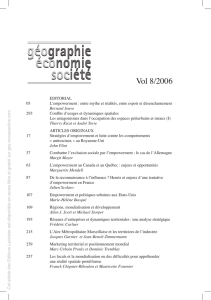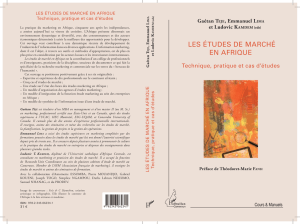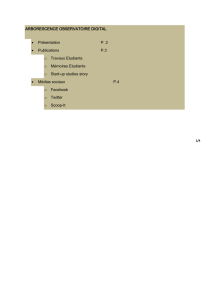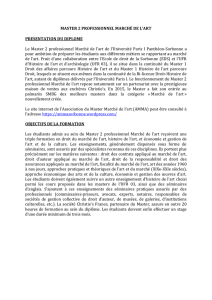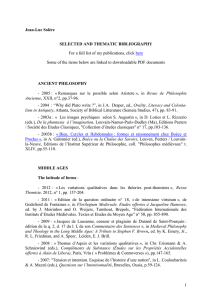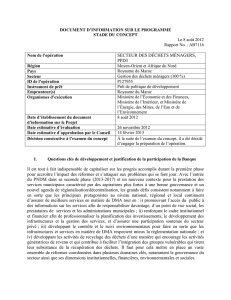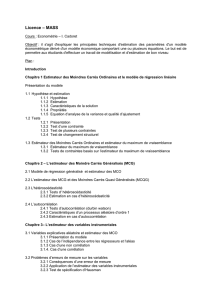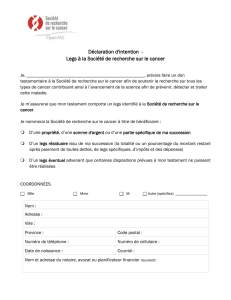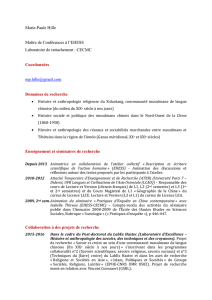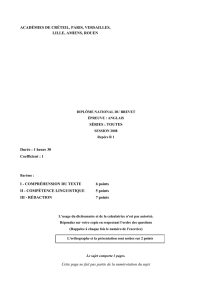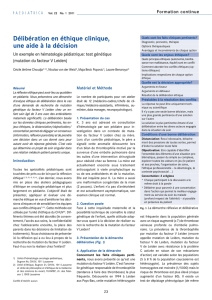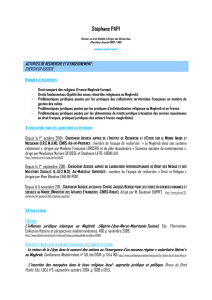1 JAN JOOSTEN : PUBLICATIONS A. OUVRAGES/BOOKS The
publicité
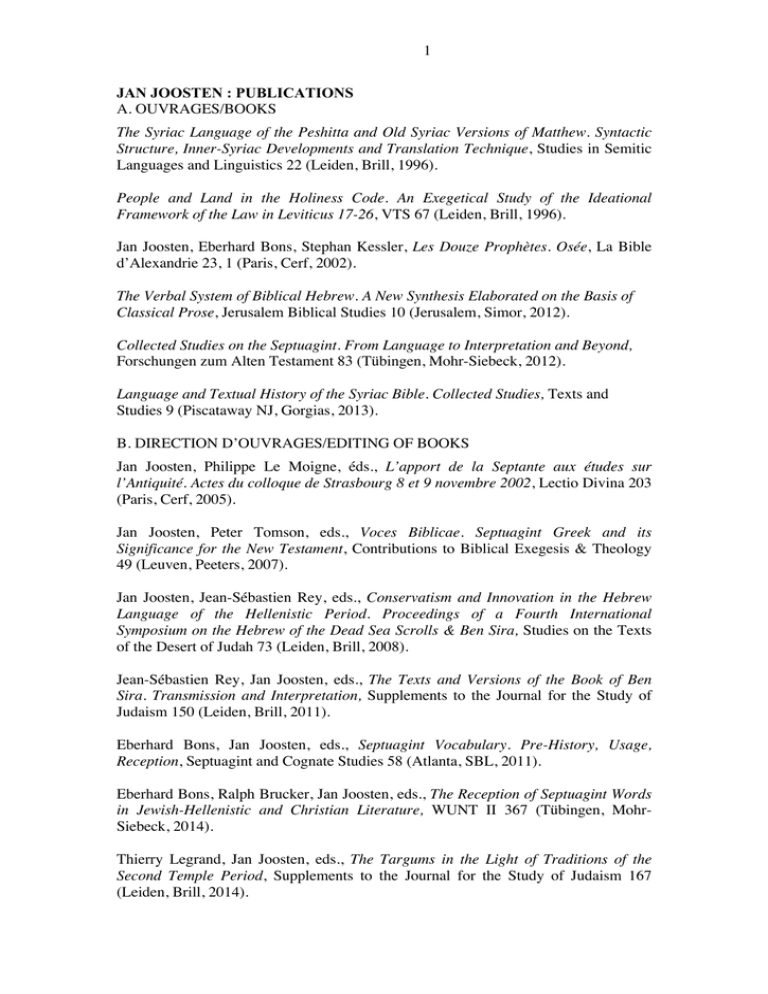
1 JAN JOOSTEN : PUBLICATIONS A. OUVRAGES/BOOKS The Syriac Language of the Peshitta and Old Syriac Versions of Matthew. Syntactic Structure, Inner-Syriac Developments and Translation Technique, Studies in Semitic Languages and Linguistics 22 (Leiden, Brill, 1996). People and Land in the Holiness Code. An Exegetical Study of the Ideational Framework of the Law in Leviticus 17-26, VTS 67 (Leiden, Brill, 1996). Jan Joosten, Eberhard Bons, Stephan Kessler, Les Douze Prophètes. Osée, La Bible d’Alexandrie 23, 1 (Paris, Cerf, 2002). The Verbal System of Biblical Hebrew. A New Synthesis Elaborated on the Basis of Classical Prose, Jerusalem Biblical Studies 10 (Jerusalem, Simor, 2012). Collected Studies on the Septuagint. From Language to Interpretation and Beyond, Forschungen zum Alten Testament 83 (Tübingen, Mohr-Siebeck, 2012). Language and Textual History of the Syriac Bible. Collected Studies, Texts and Studies 9 (Piscataway NJ, Gorgias, 2013). B. DIRECTION D’OUVRAGES/EDITING OF BOOKS Jan Joosten, Philippe Le Moigne, éds., L’apport de la Septante aux études sur l’Antiquité. Actes du colloque de Strasbourg 8 et 9 novembre 2002, Lectio Divina 203 (Paris, Cerf, 2005). Jan Joosten, Peter Tomson, eds., Voces Biblicae. Septuagint Greek and its Significance for the New Testament, Contributions to Biblical Exegesis & Theology 49 (Leuven, Peeters, 2007). Jan Joosten, Jean-Sébastien Rey, eds., Conservatism and Innovation in the Hebrew Language of the Hellenistic Period. Proceedings of a Fourth International Symposium on the Hebrew of the Dead Sea Scrolls & Ben Sira, Studies on the Texts of the Desert of Judah 73 (Leiden, Brill, 2008). Jean-Sébastien Rey, Jan Joosten, eds., The Texts and Versions of the Book of Ben Sira. Transmission and Interpretation, Supplements to the Journal for the Study of Judaism 150 (Leiden, Brill, 2011). Eberhard Bons, Jan Joosten, eds., Septuagint Vocabulary. Pre-History, Usage, Reception, Septuagint and Cognate Studies 58 (Atlanta, SBL, 2011). Eberhard Bons, Ralph Brucker, Jan Joosten, eds., The Reception of Septuagint Words in Jewish-Hellenistic and Christian Literature, WUNT II 367 (Tübingen, MohrSiebeck, 2014). Thierry Legrand, Jan Joosten, eds., The Targums in the Light of Traditions of the Second Temple Period, Supplements to the Journal for the Study of Judaism 167 (Leiden, Brill, 2014). 2 Rémi Gounelle, Jan Joosten, éds., La Bible juive dans l’Antiquité, Histoire du Texte Biblique 9 (Prahins, Zèbre, 2014). Jan Joosten, Eberhard Bons, Regine Hunziker-Rodewald, Romina Vergari, eds., Biblical Lexicology: Hebrew and Greek. Semantics – Exegesis – Translation, BZAW 443 (Berlin, De Gruyter, 2015). Eberhard Bons, Jan Joosten, Hg./eds., Die Sprache der Septuaginta/The Language of the Septuagint, LXX.H 3 (Gütersloh, Gütersloher, 2016). C. VOLUMES THEMATIQUES/THEMATIC VOLUMES Jan Joosten, Philippe Le Moigne, éds., Aspects de la Bible grecque : Actes du colloque du Groupe de Recherches sur la Septante, 23 octobre 1997, = Revue des Sciences Religieuses 280 (1999), p. 132-228. Jan Joosten, Karsten Lehmkühler, éds., Torah et éthique, = Revue des Sciences Religieuses 317 (2008), p. 301-387. D. ARTICLES 1988 “The Use of Some Particles in the Old Testament Peshitta” Textus 14 (1988), 175-83. 1989 “The Predicative Adjective in the Status Emphaticus in Classical Syriac” Bibliotheca Orientalis 46 (1989), cols. 18-24. “The Predicative Participle in Biblical Hebrew” Zeitschrift für Althebraistik 2 (1989), 128-159. “The Function of the So-called Dativus Ethicus in Classical Syriac” Orientalia 58 (1989), 473-492. 1990 “ ֶהחֳדַ לְתִּ יforma mixta ?” Zeitschrift für die alttestamentliche Wissenschaft 102 (1990), 96-97. “The Old Testament Quotations in the Old Syriac and Peshitta Gospels” Textus 15 (1990), 55-76. 1991 “The Text of Matt 13.21a and parallels in the Syriac Tradition” New Testament Studies 37 (1991), 153-159. “1 Samuel xvi 6, 7 in the Peshitta Version” Vetus Testamentum 41 (1991), 226-233. “West Aramaic Elements in the Old Syriac and Peshitta Gospels” Journal of Biblical Literature 110 (1991), 271-289. 3 “The Syntax of zeh Mošeh (Ex 32,1.23)” Zeitschrift für die alttestamentliche Wissenschaft 103 (1991), 412-415. “The Syntax of haberakah ’aḥat hi’ leka ’abi (Gen. xxvii 38aa)” Journal of Semitic Studies 36 (1991), 207-221 1992 “Two West Aramaic Elements in the Old Syriac and Peshitta Gospels” Biblische Notizen 61 (1992), 17-21. “Biblical Hebrew weqatal and Syriac hwa qatel expressing repetition in the past” Zeitschrift für Althebraistik 5 (1992), 1-14. “The Negation of the Non-verbal Clause in Early Syriac” Journal of the American Oriental Society 112 (1992), 584-588. 1993 “On Ante-position of the Attributive Adjective in Classical Syriac and Biblical Hebrew” Zeitschrift für Althebraistik 6 (1993), 188-192. “The Syntax of Relative Clauses with a First or Second Person Antecedent in Biblical Hebrew” Journal of the Near Eastern Society 52 (1993), 275-280. 1994 “West Aramaic Elements in the Syriac Gospels: Methodological Considerations” in R. Lavenant, ed., VI Symposium Syriacum 1992, Orientalia Christiana Analecta 247 (Rome, PIB, 1994), 101-109. “La macrostucture du livre de Job et quelques parallèles” in W. A. M. Beuken, ed., The Book of Job, BEThL 114 (Leuven, Peeters, 1994), 400-404. 1995 “Doublet Translations in Peshitta Proverbs” in P. B. Dirksen, A. van der Kooij, eds., The Peshitta as a Translation, Monographs of the Peshitta Institute 8 (Leiden, Brill, 1995), 63-72. “Tekstlinguïstiek en het Bijbels-Hebreeuwse werkwoord: een kritische uiteenzetting” Nederlands Theologisch Tijdschrift 49 (1995), 265-272. “Le cadre conceptuel du Code de Sainteté” Revue d’Histoire et de Philosophie Religieuses 75 (1995), 385-398. 1996 “Elaborate Similes—Hebrew and Greek. A Study in Septuagint Translation Technique” Biblica 77 (1996), 227-236. “Moïse a-t-il recelé le Code de Sainteté?” Biblische Notizen 84 (1996), 75-86. 4 “La Peshitta de l’Ancien Testament dans la recherche récente” Revue d’Histoire et de Philosophie Religieuses 76 (1996), 385-395. 1997 “‘Tu’ et ‘vous’ dans le Code de Sainteté (Lév. 17-26)” Revue des sciences religieuses 71 (1997), 3-8. “La tradition syriaque des évangiles et la question du ‘substrat araméen’“ Revue d’Histoire et de Philosophie Religieuses 77 (1997), 257-272 “‘Le Père envoie le Fils’ La provenance occidentale d’une locution syriaque” Revue de l’Histoire des Religions 214 (1997), 299-309 “The Indicative System of the Biblical Hebrew Verb and its Literary Exploitation” in E. van Wolde, ed., Narrative Syntax and the Hebrew Bible, Biblical Interpretation Series 29 (Leiden, Brill, 1997), 51-71. “Workshop: Meaning and Use of the Tenses in 1 Samuel 1” in E. van Wolde, ed., Narrative Syntax and the Hebrew Bible, Biblical Interpretation Series 29 (Leiden, Brill, 1997), 72-83. 1998 “Exegesis in the Septuagint Version of Hosea” in J. C. de Moor, ed., Intertextuality in Ugarit & Israel, Oudtestamentische Studiën 40 (Leiden, Brill, 1998), 62-85. “Odes de Salomon 7,3a. Observations sur un hellénisme dans le texte syriaque” Zeitschrift für die neutestamentliche Wissenschaft 89 (1998), 134-135. “Greek and Latin Words in the Peshitta Pentateuch. First Soundings” in R. Lavenant, ed., Symposium Syriacum VII, Orientalia Christiana Analecta 256 (Rome, PIB, 1998), 37-47. “The Numeruswechsel in the Holiness Code (Lev XVII-XXVI)” in K.-D. Schunck, M. Augustin, eds., “Lasset uns Brücken bauen…”, BEATAJ 42 (Frankfurt a. M., Peter Lang, 1998), 67-71. “The Functions of the Semitic D Stem: Biblical Hebrew Materials for a ComparativeHistorical Approach” Orientalia 67 (1998), 202-230. “Covenant Theology in the Holiness Code” Zeitschrift für Altorientalische und Biblische Rechtsgeschichte 4 (1998), 145-164. 1999 “Les Benjaminites au milieu de Jérusalem. Jérémie vi 1ss et Juges xix-xx” Vetus Testamentum 49 (1999), 67-72. “Liminaire” in Aspects de la Bible grecque, Revue des Sciences Religieuses 280 (1999), 132-134. 5 “Osée 1,2 : Texte hébreu et texte grec” in Aspects de la Bible grecque, Revue des Sciences Religieuses 280 (1999), 202-206. “Χαλκηδών (Ap 21,19)” Revue d’Histoire et de Philosophie Religieuses 79 (1999), 135-143. “Pseudo-classicisms in Late Biblical Hebrew, in Ben Sira, and in Qumran Hebrew” in T. Muraoka, J. F. Elwolde, eds., Sirach, Scrolls and Sages. Proceedings of a Second International Symposium on the Hebrew of the Dead Sea Scrolls, Ben Sira, and the Mishnah, held at Leiden University, 15-17 December 1997 (Leiden, Brill, 1999), 146159. “The Lengthened Imperative with Accusative Suffix in Biblical Hebrew” Zeitschrift für die alttestamentliche Wissenschaft 111 (1999), 423-426. “The Long Form of the Prefix Conjugation Referring to the Past in Biblical Hebrew Prose” Hebrew Studies 40 (1999), 15-26. = “A Forma Alongada do Imperfeito no que se refere ao Tempo Passado do Hebraico Biblico” Hermeneutica 2001/1, 31-44. “Materials for a Linguistic Approach to the Old Testament Peshitta” Journal for the Aramaic Bible 1 (1999), 203-18. “Active and middle diathesis in Semitic with special reference to Biblical Hebrew” SprOKrPA 43 (1999), 56-59. 2000 “L’imbrication des codes législatifs dans le récit du Pentateuque : Le cas du ‘Code de Sainteté’ (Lévitique 17-26)” in Ed. Lévy, éd., La codification des lois dans l’antiquité. Actes du Colloque de Strasbourg 27-29 novembre 1997 (Paris, De Boccard, 2000), 125-140. “Une théologie de la Septante ? Réflexions méthodologiques sur l’interprétation de la version grecque” Revue de Théologie et de Philosophie 132 (2000), 31-46. “La non-mention de la fille en Lévitique 18. Exercice sur la rhétorique du Code de Sainteté” Études Théologiques et Religieuses 75 (2000), 415-420. “Actif et moyen en sémitique. Observations historiques et comparées à partir de l’hébreu biblique” Comptes Rendus du GLECS 33 (2000), 201-220. “The Knowledge and Use of Hebrew in the Hellenistic Period. Qumran and the Septuagint” in T. Muraoka, J. F. Elwolde, eds., Diggers at the Well. Proceedings of a Third International Symposium on the Hebrew of the Dead Sea Scrolls & Ben Sira (Leiden, Brill, 2000), 115-130. “Jésus et l’aveugle-né (Jn 9,1-34) dans l’Évangile de Barnabas et dans le Diatessaron” Revue d’Histoire et de Philosophie Religieuses 80 (2000), 359-369. 6 “Le camp et la ville. L’arrière-plan vétérotestamentaire d’une équation étonnante” in M. Hengel et al., eds, La Cité de Dieu - Die Stadt Gottes. 3. Symposium Strasbourg, Tübingen, Uppsala 19.-23. September 1998 in Tübingen (Tübingen, Mohr, 2000), 119-137. 2001 “La prosopopée, les pseudo-citations et la vocation d’Isaïe (Is 6,9-10)” Biblica 82 (2001), 232-243. “Tatian’s Diatessaron and the Old Testament Peshitta” Journal of Biblical Literature 120 (2001), 501-523. “On the LXX Translators’ Knowledge of Hebrew” in B. A. Taylor, ed., X Congress of the International Organization for Septuagint and Cognate Studies, Oslo 1998 (Atlanta, SBL, 2001), 165-179. “Targumic Aramaic ‘— מרועאOppression’ (Isa. lxvii 2, Hos. xi 7, Mic. vi 3)” Vetus Testamentum 51 (2001), 552-555. “Greek Words Shared by the Peshitta and Targums to the Pentateuch” in G. Greenberg and A. Rapoport, eds., Biblical Hebrew, Biblical Texts. Michael Weitzman Memorial Volume (Sheffield, SAP, 001), 165-177. 2002 “The Gospel of Barnabas and the Diatessaron” Harvard Theological Review 95 (2002), 73-96. “Lire la Bible en traduction : Une perspective historique” Foi & Vie 101 (2002), 311. 2003 “Biblical Hebrew as Mirrored in the Septuagint : The Question of Influence from Spoken Hebrew” Textus 21 (2002), 1-19. “Magie. III Biblisch. 1 Altes Testament” Religion in Geschichte und Gegenwart, vol. 5, L-M (Tübingen, Mohr, 20024), col. 667-668. “On Aramaising Renderings in the Septuagint” in M. F. J. Baasten and W. Th. van Peursen, eds., Hamlet on a Hill. Semitic and Greek Studies Presented to Professor T. Muraoka on the Occasion of his Sixty-Fifth Birthday, Orientalia Lovaniensia Analecta 118 (Leuven, Peeters, 2003), 587-600. “The Dura Parchment and the Diatessaron” Vigiliae Christianae 57 (2003), 159-175. “« Père, j’ai péché envers le ciel et devant toi ». Remarques exégétiques et textuelles sur Luc 15, 18.21” Revue d’Histoire et de Philosophie Religieuses 83 (2003), 145156. = “I have sinned in heaven and before you” Theological Digest 51 (2004), 29-33. 7 “Minuah kitati upharshanut hamiqra: Hora’at hapo’al ‘‘wt’ bekitve Qumran” Meghillot 1 (2003), 219-226. 2004 “L’ondée et les moutons. La Septante de Michée 5,6 et l’exégèse juive traditionnelle” Revue des Études Juives 162 (2003), 357-363. “Le rapport entre l’Harmonie Vénitienne et l’Harmonie Toscane. Une contribution à l’histoire du Diatessaron italien” Rivista Biblica 52 (2004), 77-85. “Do the Finite Verbal Forms in Biblical Hebrew Express Aspect?” Journal of the Ancient Near Eastern Society 29 (2004), 49-70. “Hesed “bienveillance” et éleos “pitié”. Réflexions sur une équivalence lexicale dans la Septante” in E. Bons, éd., « Car c’est l’amour qui me plaît, non le sacrifice… ». Recherches sur Osée 6:6 et son interprétation juive et chrétienne, Supplements to the Journal for the Study of Judaism 88 (Leiden, Brill, 2004), 25-42. “Hiddushe lashon ba’ivrit shel hatequphah hahelenistit: ‘edut megillot Qumran letsad ‘edut targum hashiv’im” Meghillot 2 (2004), 151-155. “Aramaic or Hebrew behind the Gospels?” Analecta Bruxellensia 9 (2004), 88-101. 2005 “Considering the Septuagint’s Theological System” in Z. Talshir, D. Amara, eds., On the Border Line. Textual Meets Literary Criticism, Beer-Sheva 18 (Beer-Sheva, Ben Gurion, 2005), 99-113 [in Hebrew]. “Christ a-t-il aboli la loi pour réconcilier Juifs et Païens ?” Études Théologiques et Religieuses 80 (2005), 95-102. “Le Nouveau Testament : Écran ou guide entre le croyant et l’Ancien Testament ?” Sens 294 (2005), 10-21. “Source-language Oriented Remarks on the Lexicography of the Greek Versions of the Bible” Ephemerides Theologicae Lovanienses 81 (2005), 152-164. “The Ingredients of New Testament Greek” Analecta Bruxellensia 10 (2005), 56-69. “"Wenispetah ruho hatseme’ah ‘im harewayah." ‘Al perush Devarim 29, 18 bimegilloth Qumran” Meghillot 3 (2005), 231-238. “A Septuagintal Translation Technique in the Minor Prophets: The Elimination of Verbal Repetitions” in F. García Martínez, M. Vervenne, eds., Interpreting Translation. Studies on the LXX and Ezekiel in Honour of Johan Lust, BEThL 192 (Leuven, Peeters, 2005), 217-223. 2006 “The Disappearance of Iterative WEQATAL in the Biblical Hebrew Verbal System” in S. E. Fassberg, A. Hurvitz, eds., Biblical Hebrew in Its Northwest Semitic Setting. 8 Typological and Historical Perspectives (Jerusalem, Magnes / Winona Lake, Eisenbrauns, 2006), 135-147. “Préface” in Didier Luciani, Sainteté et Pardon. Structure Littéraire du Lévitique, 2 vol., BEThL 185A-B (Leuven, Peeters, 2005), VII-VIII. “The Distinction between Classical and Late Biblical Hebrew as Reflected in Syntax” Hebrew Studies 46 (2005), 327-339. “L’Agir humain devant Dieu. Remarques sur une tournure remarquable de la Septante” Revue Biblique 113 (2006), 5-17. “Comments on ‘Three Approaches to the Tripartite Nominal Clause in Syriac’ by Wido van Peursen” in P. S. F. van Keulen, W. Th. van Peursen, eds., Corpus Linguistics and Textual History. A Computer-Assisted Interdisciplinary Approach to the Peshitta, Studia Semitica Neerlandica 48 (Assen, Van Gorcum, 2006), 185-188. “The Hebrew and Syriac Text of Deuteronomy 1:44” in W. Th. van Peursen, R. B. ter Haar Romeny, eds., Text, Translation and Tradition. Studies on the Peshitta and its Use in the Syriac Tradition Presented to Konrad D. Jenner on the Occasion of his Sixty-Fifth Birthday, Monographs of the Peshitta Institute 14 (Leiden, Brill, 2006), 65-69. “Grammar and Theology in Ephesians 2:15” in R. Pierri, ed., Grammatica Intellectio Scripturae. Saggi filologici di Greco biblico in onore di Lino Cignelli OFM (Jerusalem, SBF, 2006), 331-336. “The Old Testament in the New. The Syriac Versions of the New Testament as Witness to the Text of the Old Testament Peshitta” in B. ter Haar Romeny, ed., The Peshitta: Its Use in Literature and Liturgy. Papers Read at the Third Peshitta Symposium (Leiden, Brill, 2006), 99-106. 2007 “Le milieu producteur du Pentateuque grec” Revue des Études Juives 165 (2006), 349-361. “Le discours persuasif dans l’Ancien Testament. Jalons pour une analyse de la rhétorique biblique” Positions Luthériennes 55 (2007), 37-52. “« À Dieu ne plaise » (Matthieu 16,22). La provenance et l’arrière-plan de l’expression híleôs soi” in J. Joosten, P. Tomson, éds., Voces Biblicae. Septuagint Greek and its Significance for the New Testament (Leuven, Peeters, 2007), 155-167. “A Note on the Text of Deuteronomy xxxii 8” Vetus Testamentum 57 (2007), 548555. “The Syntax of Volitive Verbal Forms in Qoheleth in Historical Perspective” in A. Berlejung, P. Van Hecke, eds., The Language of Qohelet in Its Context. Essays in Honour of Prof. A. Schoors on the Occasion of his Seventieth Birthday, Orientalia Lovaniensia Analecta 164 (Leuven, Peeters, 2007), 47–61. 9 “Éléments d’araméen occidental dans la version syriaque de Ben Sira” in A. Maman, S. E. Fassberg, Y. Breuer, eds., Sha‘arey Lashon. Studies in Hebrew, Aramaic and Jewish Languages Presented to Moshe Bar Asher, Vol. II Mishnaic Hebrew and Aramaic (Jerusalem, Bialik, 2007), *42-*55. “The Original Language and Historical Milieu of the Book of Judith” Meghillot 5-6: A Festschrift for Devorah Dimant (2007), *159-*176. 2008 “L’excédent massorétique du livre de Jérémie et l’hébreu post-classique” in Jan Joosten, Jean-Sébastien Rey, eds., Conservatism and Innovation in the Hebrew Language of the Hellenistic Period. Proceedings of a Fourth International Symposium on the Hebrew of the Dead Sea Scrolls & Ben Sira, Studies on the Texts of the Desert of Judah 73 (Leiden, Brill, 2008), 93-108. “La signification de la Torah pour l’Eglise issue des Nations” Foi & Vie 106, Cahier d’Études Juives 32 (2007), 60-73. “Language as symptom. Linguistic clues to the social background of the Seventy” Textus 23 (2007), 69-80. “Les grands résistants de l’Ancien Testament” Foi & Vie 107/2 (2008), 45-49. “Les dix Paroles dans l’Ancien Testament” in R. Gounelle et A. Noblesse-Rocher, éd., Le Décalogue, Cahiers Évangile Supplément 144 (Paris, Cerf, 2008), 5-8. “« Fais cela et tu vivras ». Un motif vétérotestamentaire et ses échos néotestamentaires” Revue des Sciences Religieuses 82 (2008), 331-341. “Reflections on the ‘Interlinear Paradigm’ in Septuagintal Studies” in A. Voitila & J. Jokiranta, eds., Scripture in Transition. Essays on Septuagint, Hebrew Bible, and Dead Sea Scrolls in Honour of Raija Sollamo, Supplements to the Journal for the Study of Judaism 126 (Leiden, Brill, 2008), 163-178. “To See God. Conflicting Exegetical Tendencies in the Septuagint” in M. Karrer, W. Kraus, eds., Die Septuaginta — Texte, Kontexte, Lebenswelten, Wissenschaftliche Untersuchungen zum Neuen Testament 219 (Tübingen, Mohr, 2008), 287-299. Sidnie White Crawford, Jan Joosten, Eugene Ulrich, “Sample Editions of the Oxford Hebrew Bible: Deuteronomy 32:1-9, 1 Kings 11:1-8, and Jeremiah 27:1-10 (34 G)” Vetus Testamentum 58 (2008), 352-366 [J. Joosten, 1 Kings 11:1-8, pp. 357-363]. “The Septuagint as a source of information on Egyptian Aramaic in the Hellenistic Period” in H. Gzella, M. L. Folmer, eds., Aramaic in its Historical and Linguistic Setting, Akademie der Wissenschaften und der Literatur – Mainz, Veröffentlichungen der Orientalistischen Kommission 50 (Wiesbaden, Harrassowitz, 2008), 93-105. 10 “La Peshitta de l’Ancien Testament et les Targums” in F. Briquel Chatonnet et Ph. Le Moigne, éds, L’Ancien Testament en syriaque, Études syriaques 5 (Paris, Geuthner, 2008), p. 91-100. “La vérité philologique dans les débats sur la datation des textes bibliques” in Pascale Hummel et Frédéric Gabriel, éds.,Vérité(s) philologique(s). Études sur les notions de vérité et de fausseté en matière de philologie (Paris, Philologicum, 2008), 19-33. “La critique textuelle” et “Traduction et critique textuelle de Nombres 12” in Michaela Bauks et Christophe Nihan, dir., Manuel d’Exégèse de l’Ancien Testament (Genève, Labor & Fides, 2008), 14-45 et 191-196. “Hebbetim diakroniim shel hashimush be"wayhi" basippur hamiqra’i” Mehqarim beLashon 11-12: Avi Hurvitz Festschrift (2008), 165-172. “The Impact of the Septuagint Pentateuch on the Greek Psalms” in M. K. H. Peters, ed., XIII Congress of the International Organization for Septuagint and Cognate Studies. Ljubljana 2007, Septuagint and Cognate Studies 55 (Atlanta, SBL, 2008), 197-205. 2009 “The Dead Sea Scrolls and the Septuagint in Mutual Illumination” in H. Ausloos, B. Lemmelijn, M. Vervenne, eds., Florilegium Lovaniense. Studies in Septuagint and Textual Criticism in Honour of Florentino García Martínez, BEThL 224 (Leuven, Peeters, 2008), 245-252. “La Prière d’Azarias (Daniel LXX 3,26-45). Première partie : la question de la langue originale” in D. Gerber, P. Keith, éds., Les hymnes du Nouveau Testament et leurs fonctions. XXIIe congrès de l’ACFEB (Strasbourg 2007), Lectio Divina 225 (Paris, Cerf, 2009), 373-384. “The Interpretation of Deuteronomy 29:17-18 in the Hellenistic Period. Septuagint, Qumran and Parabiblical Literature” in D. Dimant, R. G. Kratz, eds., The Dynamics of Language and Exegesis at Qumran, FAT 35 (Tübingen, Mohr, 2009), 107-120. “Three remarks on infinitival paronomasia in Biblical Hebrew” in D. Sivan, D. Talshir, C. Cohen, eds., Zaphenath-Paneah. Linguistic Studies Presented to Elisha Qimron on the Occasion of his Sixty-Fifth Birthday (Beer Sheva, Ben Gurion University of the Negev, 2009), *99-*113. “The Prayer of Azariah (DanLXX 3): Sources and Origin” in J. Cook, ed., Septuagint and Reception, VTS 127 (Leiden, Brill, 2009), 5-16. “A Note on weyiqtol and Volitive Sequences” Vetus Testamentum 59 (2009), 495498. “Grammatik. I. Alttestamentlich” in Oda Wischmeyer, ed.., Lexikon der Bibelhermeneutik (Berlin, De Gruyter, 2009), 234-235. 11 “Übersetzung/Übersetzen/Übersetzer. I. Alttestamentlich” in Oda Wischmeyer, ed., Lexikon der Bibelhermeneutik (Berlin, De Gruyter, 2009), 619-620. “The Graeco-Semitic vocabulary of the New Testament: A plea for a new research tool” in Juan-Pedro Monferrer Sala & Angel Urbán, eds., Sacred Text. Explorations in Lexicography (Frankfurt a. M., Peter Lang, 2009), 115-126. “Diachronic Aspects of Narrative Wayhi in Biblical Hebrew” Journal of Northwest Semitic Languages 35 (2009), 43-61. 2010 Jan Joosten & Menahem Kister, “The New Testament and Rabbinic Hebrew” in R. Bieringer, F. García Martínez, D. Pollefeyt, P. J. Tomson, eds., The New Testament and Rabbinic Literature, SJSJ 136 (Leiden, Brill, 2010), 335-350. “La persuasion coopérative dans le discours sur la loi: Pour une analyse de la rhétorique du Code de Sainteté” in A. Lemaire, ed., Congress Volume Ljubljana 2007, VTS 133 (Leiden, Brill, 2010), 381-398. “L’homme dans la Bible hébraïque” Foi & Vie 108/5 – 33e Cahier des études juives (2009), 77-90. “The Date and Provenance of the Gospel of Barnabas” Journal of Theological Studies 61 (2010), 200-215. “Al tiqré as a hermeneutical device and the Septuagint” in W. Kraus, M. Karrer, M. Meiser, eds., Die Septuaginta – Texte, Theologien, Einflüsse, WUNT 252 (Tübingen, Mohr, 2010), 377-390. “Abram et Saraï en Égypte. Composition et message de Genèse 12, 10-20” in M. Arnold, G. Dahan, A. Noblesse-Rocher, éds., La sœur-épouse (Genèse 12, 10-20), Lectio Divina 237 (Paris, Cerf, 2010), 11-25. E. Bons & J. Joosten, “Historical and Theological Dictionary of the Septuagint” Early Christianity 1,2 (2010), 311-312. “De knecht in de Septuagint” Schrift 251 (2010), 169-172. “Hebrew, Aramaic, and Greek in the Qumran Scrolls” in T. H. Lim, J. J. Collins, eds., The Oxford Handbook of the Dead Sea Scrolls (Oxford, OUP, 2010), 351-374. “Translating the Untranslatable: Septuagint Renderings of Hebrew Idioms” in R. Hiebert, “Translation Is Required”: The Septuagint in Retrospect and Prospect (Leiden, Brill / Atlanta, SBL, 2010), 59-70. “La Bible d’Alexandrie and How to Translate the Septuagint” in R. Hiebert, “Translation Is Required”: The Septuagint in Retrospect and Prospect (Leiden, Brill / Atlanta, SBL, 2010), 239-242. 12 “L’araméen de Qumran entre l’araméen d’empire et les targumim : l’emploi de la préposition « devant » pour exprimer le respect dû au roi et à Dieu” in K. Berthelot, D. Stökl Ben Ezra, Aramaica Qumranica. Proceedings of the Conference on the Aramaic Texts from Qumran in Aix-en-Provence 30 June – 2 July 2008 (Leiden, Brill, 2010), 83-97. 2011 “A Note on the Anomalous Jussive in Exodus 22:4” Textus 25 (2010), 9-16. “Diatessaron” in Daniel Patte, ed., The Cambridge Dictionary of Christianity (Cambridge, CUP, 2010), 323. “‘A soft tongue can break bones’. Judah’s Speech in Genesis 44:18-34 and Biblical Rhetoric” Mo‘ed 20 (2010), 21-34, [2] [Hebrew, with English abstract]. “Le dieu Iaô et le tréfonds araméen des Septante” in Mireille Loubet, Didier Pralon, dir., EUKARPA. Études sur la Bible et ses exégètes en hommage à Gilles Dorival (Paris, Cerf, 2011), 115-124. “Archaic Elements in the Syriac Version of Ben Sira” in Jean-Sébastien Rey, Jan Joosten, eds., The Texts and Versions of the Book of Ben Sira. Transmission and Interpretation, Supplements to the Journal for the Study of Judaism 150 (Leiden, Brill, 2011), 167-175. “The Vocalization of the Form תָ ָעבְדֵ םin the Ten Commandments” in R. I. Zer, Y. Ofer, eds., ISRAEL. Linguistic Studies in the Memory of Israel Yeivin (Jerusalem, HUBP, 2011), 335-339, xxvii [Hebrew, with English abstract]. “Rhetorical ornamentation in the Septuagint: The case of grammatical variation” in E. Bons, Th. J. Kraus, eds., Et sapienter et eloquenter. Studies on Rhetorical and Stylistic Features of the Septuagint, FRLANT 241 (Göttingen, Vandenhoeck & Ruprecht, 2011), 11-23. “The Vocabulary of the Septuagint and its Historical Context” in E. Bons, J. Joosten, eds., Septuagint Vocabulary. Pre-History, Usage, Reception, Septuagint and Cognate Studies 58 (Atlanta, SBL, 2011), 1-11. “Le vocabulaire de la Septante et la question du sociolecte des juifs alexandrins : Le cas du verbe ΕΥΛΟΓΕΩ, « bénir »” in E. Bons, J. Joosten, eds., Septuagint Vocabulary. Pre-History, Usage, Reception, Septuagint and Cognate Studies 58 (Atlanta, SBL, 2011), 13-23. “The operation of a syntactic rule in Classical Biblical Hebrew and in Hebrew inscriptions of the monarchic period” in J. K. Aitken, K. J. Dell, B. A Mastin, eds., On Stone and Scroll. Essays in Honour of Graham Ivor Davies, BZAW 420 (Berlin, De Gruyter, 2011), 493-505. “Deutéronome 32,8-9 et les commencements de la religion d’Israël” in E. Bons, Th. Legrand, Le monothéisme biblique. Évolution, contextes et perspectives (Paris, Cerf, 2011), 91-108. 13 “A Neglected Rule and Its Exceptions: On Non-Volitive yiqtol in Clause-Initial Position” in G. Geiger, ed., Ἐν πάσῃ γραμματικῇ καὶ σοφίᾳ Saggi di linguistica ebraica in onore di Alviero Niccacci, ofm (Jerusalem, Franciscan Printing Press, 2011), 213-219. “Discours prophétique et rhétorique populaire dans la Bible hébraïque” Revue Biblique 118 (2011), 482-495. “The Aramaic Background of the Seventy: Language, Culture and History” Bulletin of the International Organization for Septuagint and Cognate Studies 43 (2010), 5372. “La Bible hébraïque, le Nouveau Testament et la représentation du judaïsme auprès des protestants” Foi & Vie 210, Cahier d’Études Juives 34 (2011), 5-16. 2012 “Abram and Sarai in Egypt (Genesis 12:10–20)” Babel und Bibel 6 (2012), 369-381. “Moïse, l’assemblée et les fils d’Israël. La structuration du pouvoir dans le Code de Sainteté” in D. Luciani, A Wénin, dir., Le Pouvoir. Enquêtes dans l’un et l’autre Testament, Lectio Divina 248 (Paris, Cerf, 2012), 23-41. “Textual developments and historical linguistics” in H. Ausloos, B. Lemmelijn & J. Trebolle Barrera, eds., After Qumran. Old and Modern Editions of the Biblical Texts – The Historical Books, BEThL 246 (Leuven, Peeters 2012), 21-31. “Textual history and linguistic developments. The doublet in 2 Kgs 8:28-29 // 9:15-16 in light of 2 Chr 22:5-6” in Andrés Piquer Otero, Pablo Torijano Morales, eds., Textual Criticism and Dead Sea Scrolls Studies in Honour of Julio Trebolle Barrera: Florilegium Complutense, JSJS 157 (Leiden, Brill, 2012), 133-145. “Interpretation and Meaning in the Septuagint Translation” in Anneli Aejmelaeus, Päivi Pahta, eds., Translation – Interpretation – Meaning, COLLeGIUM, Studies across Disciplines in the Humanities and Social Sciences 7 (Helsinki, Helsinki Collegium for Advanced Studies, 2012), 52-62 (http://www.helsinki.fi/collegium/eseries/volumes/volume_7/index.htm). “Que s’est-il passé au jardin d’Éden ?” Revue des Sciences Religieuses 86 (2012), 493-501. “The Evolution of Literary Hebrew in Biblical Times: The Evidence of Pseudoclassicisms” in Cynthia L. Miller-Naudé, Ziony Zevit, eds., Diachrony in Biblical Hebrew (Winona Lake IN, Eisenbrauns, 2012), 281-292. “Variations, évolutions, rupture : une approche diachronique de l’hébreu biblique” in Bernard Pouderon, Jérôme Casas, dir., Variations, évolutions, métamorphoses, Colloques de l’Institut Universitaire de France (Saint-Étienne, Publications de l’Université de St-Étienne, 2012), 93-105. 14 “The value of the Septuagint for textual criticism of the Hebrew Bible as illustrated by the Oxford Hebrew Bible edition of 1 Kings” in Johann Cook, Herman-Josef Stipp, eds., Text-Critical and Hermeneutical Studies in the Septuagint, SVT 157 (Leiden, Brill, 2012), 223-236. 2013 “La place de la Septante dans l’histoire de l’interprétation biblique” in Anne-Laure Zwilling, dir., Lire et interpréter. Les religions et leurs rapports aux textes fondateurs (Genève, Labor et Fides, 2013), 35-43. “The Historical and Theological Lexicon of the Septuagint: A Sample Entry — εὐλογέω” in Melvin K. H. Peters, ed., XIV Congress Of The IOSCS, Helsinki, 2010, Septuagint and Cognate Studies 59 (Atlanta, SBL, 2013), 347-355. “Réflexions théologiques sur Lévitique 17” Revue d’Histoire et de Philosophie Religieuses 93 (2013), 145-156. “Varieties of Greek in the Septuagint and New Testament” in James Carleton Paget, Joachim Schaper, eds., The New Cambridge History of the Bible From the Beginnings to 600 (Cambridge, CUP, 2013), 22-45. “A syntactic Aramaism in the Septuagint: ἰδού in temporal expressions” Journal of Septuagint and Cognate Studies 45 (2012), 39-45. “Wilhelm Gesenius and the history of Hebrew in the Biblical period” in Stefan Schorch, Ernst-Joachim Waschke, Hrsg., Biblische Exegese und hebräische Lexikographie. Das „Hebräisch-deutsche Handwörterbuch“ von Wilhelm Gesenius als Spiegel und Quelle alttestamentlicher und hebräischer Forschung, 200 Jahre nach seiner ersten Auflage, BZAW 427 (Berlin, De Gruyter, 2013), 94-106. “Imperative Clauses containing a Temporal Phrase And the Study of Diachronic Syntax in Ancient Hebrew” in Steven E. Fassberg, Moshe Bar-Asher, Ruth A. Clements, eds., Hebrew in the Second Temple Period. The Hebrew of the Dead Sea Scrolls and of Other Contemporary Sources, STDJ 108 (Leiden, Brill, 2013), 117131. “Classicism: Biblical Hebrew” in Geoffrey Khan et al. Encyclopedia of Hebrew Language and Linguistics, Volume I (Leiden, Brill, 2013), 454. “(Hebrew in) Egypt: in Antiquity” in Geoffrey Khan et al. Encyclopedia of Hebrew Language and Linguistics, Volume I (Leiden, Brill, 2013), 790-791. “Hebraisms in the Greek Versions of the Hebrew Bible” in Geoffrey Khan et al. Encyclopedia of Hebrew Language and Linguistics, Volume II (Leiden, Brill, 2013), 196-198. “Septuagint: Underlying Knowledge of Hebrew” in Geoffrey Khan et al. Encyclopedia of Hebrew Language and Linguistics, Volume III (Leiden, Brill, 2013), 542-543. 15 “Verbal System: Biblical Hebrew” in Geoffrey Khan et al. Encyclopedia of Hebrew Language and Linguistics, Volume III (Leiden, Brill, 2013), 921-925. “YHWH’s Farewell to Northern Israel (Micah 6,1-8)” ZAW 125 (2013), 448-462. “Linguistic clues as to the date of the Book of Job: A Mediating Position” in James K. Aitken, Jeremy M. S. Clines, and Christl M. Maier, eds., Interested Readers. FS David Clines (Atlanta, SBL, 2013), 347-357. “Prophetic discourse and popular rhetoric in the Hebrew Bible” Canon & Culture 7 (2013), 43-58. “Traduire la Parole. La Septante à la lumière de l’histoire, de la philologie et de la théologie” Revue d’Histoire et de Philosophie Religieuses 93 (2013), 481-497. “The syntax of Exodus 20:24b. Remarks on a recent article by Benjamin Kilchör” Biblische Notizen 159 (2013), 3-8. 2014 “Hebrew Thought and Greek Thought in the Septuagint: Fifty Years after Barr’s Semantics” in Richard A. Taylor, Craig E. Morrison, eds., Reflections on Lexicography. Explorations in Ancient Syriac, Hebrew, and Greek Sources, Perspectives on Linguistics and Ancient Languages 4 (Piscataway, Gorgias, 2014), 149-157. “Réflexions sur le Décalogue de la Septante : texte, traduction, théologie” in Matthieu Arnold et Jean-Marc Prieur (†), dir., Le Décalogue. Perspectives exégétiques, historiques et éthiques, Travaux de la Faculté de Théologie Protestante de Strasbourg 16 (Strasbourg, Association des Publications de la Faculté de Théologie Protestante, 2014), 5-17. “Is there a place for conjectures in a critical edition of the Hebrew Bible? Reflections in preparation of a critical text of 1 Kings” in K. De Troyer, T. M. Law, M. Liljeström, eds., In the Footsteps of Sherlock Holmes. Studies in the Biblical Text in Honour of Anneli Aejmelaeus, Contributions to Biblical Exegesis & Theology 72 (Leuven, Peeters, 2014), 365-375. “Mixed Blessings. The biblical notion of blessing in the works of Philo and Flavius Josephus” in E. Bons, R. Brucker, J. Joosten, eds., The Reception of Septuagint Words in Jewish-Hellenistic and Christian Literature, WUNT II 367 (Tübingen, Mohr-Siebeck, 2014), 105-115. “The Samareitikon and the Samaritan Tradition” in W. Kraus, S. Kreuzer, eds., Die Septuaginta – Text, Wirkung, Rezeption, WUNT 325 (Tübingen, Mohr-Siebeck, 2014), 346-359. “Des targumismes dans la Septante ?” in Thierry Legrand, Jan Joosten, eds., The Targums in the Light of Traditions of the Second Temple Period, Supplements to the Journal for the Study of Judaism 167 (Leiden, Brill, 2014), 54-71. 16 “The Verb ‘ גערto Exorcize’ in Qumran Aramaic and Beyond” DSD 21 (2014), 347355. “Trahir pour mieux traduire. La traduction « contradictoire » dans la Septante” in D. Frey, C. Grappe, M. Wieger, eds., Usages et mésusages de l’Écriture, Écriture et Société (Strasbourg, Presses Universitaires de Strasbourg, 2014), 19-30. “Préface” in Rémi Gounelle, Jan Joosten, éds., La Bible juive dans l’Antiquité, Histoire du Texte Biblique 9 (Prahins, Zèbre, 2014), 5-8. 2015 “Reflections on the Original Language of the Psalms of Solomon” in E. Bons, P. Pouchelle, eds., The Psalms of Solomon: Language, History, Theology, Early Judaism and Its Literature 40 (Atlanta, SBL, 2015), 31-47. “The Interplay between Hebrew and Greek in Biblical Lexicology: Language, Text, and Interpretation” in Jan Joosten, Eberhard Bons, Regine Hunziker-Rodewald, Romina Vergari, eds., Biblical Lexicology: Hebrew and Greek. Semantics – Exegesis – Translation, BZAW 443 (Berlin, De Gruyter, 2015), 209-223. “Septuagint and Samareitikon” in Cana Werman, ed., From Author to Copyist: Essays on the Composition, Redaction, and Transmission of the Hebrew Bible in Honor of Zipi Talshir (Winona Lake IN, Eisenbrauns, 2015), 1-15. “The Tiberian Vocalization and the Hebrew of the Second Temple Period” in Eibert Tigchelaar, Pierre Van Hecke, eds., Hebrew of the Late Second Temple Period: Proceedings of a Sixth International Symposium on the Hebrew of the Dead Sea Scrolls and Ben Sira (STDJ 114; Leiden, Brill, 2015), 25-36. “The Tiberian vocalization and the edition of the Hebrew Bible Text” in I. Himbaza, ed., Making the Biblical Text. Textual Studies in the Hebrew and Greek Bible (OBO 275; Fribourg/Göttingen, Academic Press/Vandenhoeck & Ruprecht, 2015), 19-32. “Une lecture du texte hébreu” in G. Dahan et al, éd., L’épreuve d’Abraham ou la ligature d’Isaac (Genèse 22) (Cahiers Évangile Supplément 173; Paris, Cerf, 2015), 3-11. “Le texte biblique cité dans les Actes de Pilate” in R. Gounelle, B. Mounier, La littérature apocryphe chrétienne et les Écritures juives (Prahins, Zèbre, 2015), 181192. “Jewish Greek in the Septuagint: On εὐλογέω ‘to praise’ with Dative” in J. K. Aitken, T. V. Evans, eds, Biblical Greek in Context. Essays in Honour of John A.L. Lee (Biblical Tools and Studies 22; Peeters, Leuven, 2015), 137-144. 2016 “Psalm 8. Macbride sermon 2015: Hertford College, Oxford” Expository Times 127/5 (2016), 243-246. 17 “Divergent cultic practices in the Septuagint. The “shoulder” (βραχίων) of the priest” JSCS 48 (2015), 27-38. “Osee / Hosea” in S. Kreuzer, ed., Einleitung in die Septuaginta (LXX.H 1; Gütersloh: Gütersloher, 2016), 474-480. Cécile Dogniez & Jan Joosten, “Michaias / Micha” in S. Kreuzer, ed., Einleitung in die Septuaginta (LXX.H 1; Gütersloh: Gütersloher, 2016), 490-496. “Pseudo-Classicisms in Late Biblical Hebrew” ZAW 128 (2016), 16–29 “Le texte biblique cité dans les Actes de Pilate” in R. Gounelle, B. Mounier, La littérature apocryphe chrétienne et les Ecritures juives (Publications de l’Institut Romand des Sciences Bibliques 7; Prahins CH, Editions du Zèbre, 2015), 181-192. “Septuagint Greek and the Jewish Sociolect in Egypt” in Eberhard Bons, Jan Joosten, Die Sprache der Septuaginta/The Language of the Septuagint (LXX.H 3; Gütersloh, Gütersloher, 2016), 246-256. “Le Verbe Créateur. Réflexions sur le texte hébreu de Genèse 1, 1-8” in Béatrice Bakhouche, éd., Science et exégèse. Les interprétations antiques et médiévales du récit biblique de la création des éléments (Genèse 1,1-8) (BEHE 167; Brepols, Turnhout, 2016), 31-40. “The Origin of the Septuagint Canon” in Siegfried Kreuzer, Martin Meiser, Marcus Sigismund, eds., Die Septuaginta – Orte und Intentionen (WUNT 361; Mohr Siebeck, Tübingen, 2016), 688-699.
